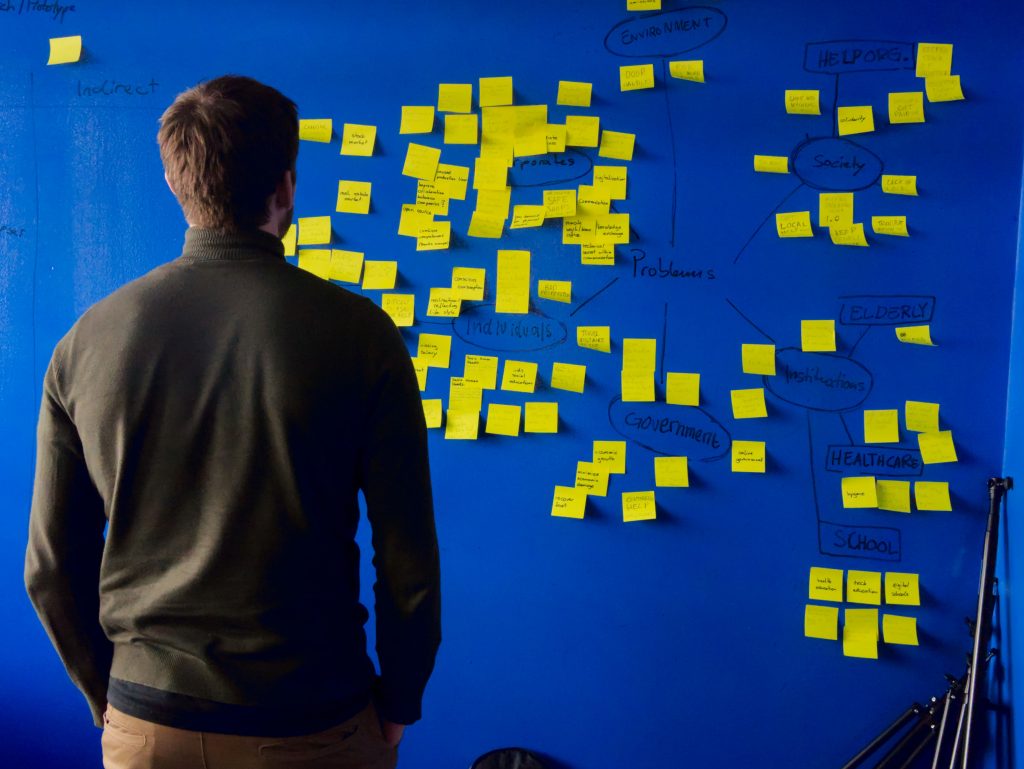Brainstorming for Innovation
One key technique for brainstorming for innovation is to start by visualizing the problem. This can be done through creating a mind map or other diagram of all related concepts and ideas. This helps to organize thoughts, identify patterns and make connections that may have been previously overlooked. It also enables participants to share their viewpoints in a more organized manner, which can lead to more effective collaboration and new insights.
Another important brainstorming technique is reverse engineering. This means breaking down an idea into smaller components and then analyzing each component individually before putting them back together in new ways to form innovative solutions. By doing this, it allows individuals to view the same concept from different angles, leading them to come up with creative solutions that they wouldn’t have thought of before.
Finally, when brainstorming for innovation it is important not just rely on one person’s ideas but instead foster an environment of collective creativity by encouraging everyone involved to contribute their own thoughts and perspectives. By doing this it will help generate a greater diversity of ideas which can be filtered through discussion and evaluation until the best solution is found.
Definition of Brainstorming
Brainstorming is a creative problem-solving technique used to generate ideas or solutions. It can be done alone or in a group and involves creating an open environment of sharing where all ideas, no matter how wild, are welcomed. This process encourages participants to think ‘outside the box’ and come up with as many potential solutions as possible without worrying about whether they are feasible or not. Brainstorming allows for quick generation of new ideas and works best when members bring different perspectives to the table so that diverse opinions can be considered.
Brainstorming typically follows the steps of goal setting, data gathering, idea generation, solution evaluation and selection. During idea generation participants will spend time working together to come up with various solutions by discussing different aspects of the problem such as possible causes and effects. All ideas generated during this session should be recorded on paper or whiteboards so that everyone involved can refer back to them later on when evaluating potential solutions. After selecting a solution it is important for participants to reflect on their decision-making process so that any lessons learned may be applied in future brainstorming sessions.
Benefits for Brainstorming
Brainstorming is a technique that brings together creative individuals to generate ideas and solve problems. It encourages participants to think outside of the box and come up with new solutions or ideas. This process has many benefits for teams, including increased productivity and collaboration.
One benefit of brainstorming is that it helps foster creativity among team members. By allowing everyone in the group to express their ideas freely, this opens up more possibilities and allows team members to think more innovatively, pushing them out of their comfort zone. Brainstorming also encourages collaboration between members, as they are able to build on each other’s ideas and work towards finding a solution that meets everyone’s needs.
Another benefit of brainstorming is that it can help increase productivity levels within teams by providing a structured environment where everyone can discuss potential solutions without feeling like they’re stuck in an endless loop of discussion. The process also helps people focus on one problem at a time instead of getting distracted by unrelated issues or topics. In addition, it requires participants to actively engage with each other’s ideas in order for the session to be successful, which keeps participants from becoming passive or uninterested during the process.

Tools for Brainstorming
Brainstorming is a creative problem-solving technique that can be used to come up with new ideas and solutions. While the traditional method involves paper and pen, there are now several tools available to help facilitate brainstorming. These tools can help bring structure to the process, allow multiple people to collaborate remotely, and provide helpful resources or prompts.
One popular tool for brainstorming is Mind Mapping. Mind mapping involves creating a visual representation of your thoughts and ideas by connecting related concepts together in a web-like structure. It helps to organize thoughts in an easy-to-follow format so that all team members can stay on task during the brainstorming session. Another useful tool is Brainwriting. This tool allows participants to submit their ideas anonymously, giving everyone a chance to contribute without fear of criticism from others in the group. Brainwriting also encourages out-of-the-box thinking since it eliminates biases and preconceptions about potential solutions before they’re discussed as a group. Finally, there are online collaboration tools such as Mural which provide templates for creating digital boards containing ideas from multiple contributors at once—making it easier than ever for remote teams to work together on complex projects quickly and efficiently.
Overall, there are many different tools available today that can make the process of brainstorming more efficient and effective—helping teams generate innovative solutions faster than ever before!
Ideation Methods
Brainstorming is a powerful ideation method for coming up with innovative ideas. The technique involves gathering a group of people and encouraging them to freely generate as many ideas as possible without judgement. It’s important for the facilitator to create an environment that encourages creativity, open-mindedness and collaboration. Crowdsourcing is another great technique for collecting many different perspectives from around the world. This method allows organizations to tap into the collective intelligence of their customers and stakeholders to come up with creative solutions in areas such as product design or marketing campaigns. A third method is mind mapping which involves creating a visual diagram or map of all your thoughts related to a particular topic, issue or challenge. Mind maps help you uncover connections between different ideas, form strategies and identify key concepts that can be further explored during brainstorming sessions. Regardless of which ideation methods you use, it’s important to remember that no idea should be judged at first glance – any idea can potentially lead to something brilliant!
Guidelines for Group Discussions
Group discussions can be a great way for brainstorming new ideas. To get the best outcome from these interactions it is important to have certain guidelines in place.
Firstly, having a clear purpose and expected outcomes are essential for productive conversations. All participants should agree on what topics need to be discussed and set time limits for each topic. Additionally, all members should contribute equally in order to ensure everyone has equal access and input into the discussion. This could involve assigning roles such as facilitator or note-taker to ensure full participation.
Another key part of successful group discussions is being open-minded and creative during problem solving sessions. It can help to encourage outside-the-box thinking by avoiding any type of judgment or criticism during the conversation so that everyone feels comfortable sharing their ideas without fear of judgment or ridicule. Furthermore, it might be beneficial to assign tasks which require creative solutions; this will allow the group to come up with innovative solutions while working together in a collaborative manner. Ultimately, having clear guidelines in place before starting any group discussion will facilitate more effective brainstorming sessions, leading to greater innovation within your organization or team!
Don’t Discourage Ideas
Encouraging ideas is essential for successful brainstorming. People will be more likely to share their thoughts if they feel supported and appreciated by the group. It’s important to create an environment where everyone feels comfortable taking risks and sharing their ideas without fear of criticism or ridicule. Invite team members to speak up, listen attentively, and provide helpful feedback when appropriate. Ask open-ended questions that allow people to explore different topics in depth, such as “What would be a great way to solve this problem?”
When evaluating new ideas, avoid being overly critical or dismissive. Instead of immediately shooting down an idea, take the time to ask questions so you can gain more insight into why it was proposed in the first place and how it might fit into the bigger picture. Encourage creative risk-taking by deliberately leaving room for innovation during brainstorming sessions, allowing participants to think outside the box without fear of failure or judgment. By encouraging rather than discouraging ideas, you can help foster an environment that allows for meaningful collaboration and encourages innovative thinking among your team members.
Conclusion: Creative Thinking
Creative thinking involves using imagination to come up with new ideas and solutions. It is an essential skill for innovation, as it allows individuals to explore various possibilities and find unique opportunities. A few brainstorming techniques that can be used to foster creative thinking include: mind mapping, lateral thinking, SCAMPER technique, random word association, and analogies. All of these techniques help individuals break out of their traditional thought patterns and think outside the box in order to generate innovative ideas and solutions.
To ensure successful implementation of creative thinking processes, organizations should create a supportive environment where individuals have the freedom to explore different ideas without fear of criticism. Additionally, organizations should also encourage collaboration between members so that everyone has a chance to contribute their own thoughts. Finally, organizations must reward creative successes in order to motivate employees to continue exploring new possibilities and developing fresh perspectives on existing problems. By embracing creative thinking strategies such as brainstorming techniques, organizations can become more competitive through increased innovation and improved problem solving ability.
kampungbet


